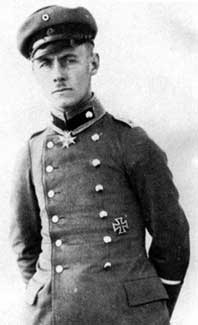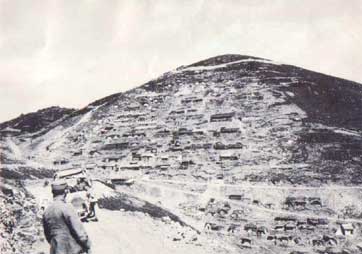

 ..
..The start of the First World War on the 28th July
1914 should not have disturbed the Natisone
Valleys since Italy was part of the Triple
Alliance with “Central Empires” Germany
and Austria-Hungary, so the Slavia Friulana
border was a “friendly” border. In addition, the
Italian government had already announced its
neutrality on the 3rd August as they claimed that
the Triple Alliance had a defensive agreement
and the Austro-Hungarian Empire declared war
against Serbia, making them the aggressors; and
hence not obligating Italy to enter. The Austro-
Hungarian Empire had in fact declared war in
order to avenge the assassination of the Archduke
Francesco Ferdinand of Austria in Sarajevo, in a
nationalistic Serbian attack.
Nevertheless there was something that was not
right regarding the official structure of the Alliance.
The inhabitants of the Natisone Valley realised this
from the second half of the 1914: because on the
border (which then coincided exactly with today’s
border between Italy and Slovenia, and is also
the centuries old border that divided the Venetian
Republic and the Hapsburg Empire) between
Castelmonte/Stara Gora, Kolovrat, Matajur and
Craguenza/Kraguojnca mountains and Mladesena,
Italy started important preparations to strengthen
defences by constructing fortified trenches,
logistic infrastructures and also road networks
behind defence lines. The latter however was
rather lacking if you exclude the main road on the
Natisone/Nediža valley floor. Furthermore, during
this period, most of today’s road network structure
in the Benecia area was developed.
Italy in reality was secretly negotiating with the Triple Entente (Great Britain, France and Russia).
During the stalemate period that followed after the first weeks of the First World War, Italy could have made the scales tip to either side of the parties involved and was therefore able to negotiate and consider who would give the best territorial advantages in the event of a victory. In addition a cultural, but influential, minority saw this as an advantageous reopening of the hostilities with Austria to end the cycle of wars of the Risorgimento and to reclaim all the unredeemed territory.
The Italian defence in the Natisone valleys was already incredibly developed and the population already lived in a war zone when Italy renounced its obligations to the Triple Alliance and joined theTriple Entente by signing the Treaty of London on 26th April 1915.
The first cannon was fired on 24th May 1915.
In the Natisone valley the cyclist bersaglieri
advanced to Kobriad/Caporetto; another division
of Bersaglieri from Cepletischis/Čeplešišče
occupied Livek and the territory on the right of
the Isonzo/Soča River.
At Solarie/Solarje on the night of 24th May the
first Italian soldier, Riccardo Di Giusto, a Friulian
Alpine Troop, was killed by Austrian shooting.
The advancements of the Italian army were not
heroic since the Austrian soldiers simply retreated
from their defence posts on the left of the Isonso/
Soča River. In June 1915 the capture of Mount
Ken/Nero’s peak was of great importance for
the Italian Alpine troops, although difficult and
arduous.
From then on, on the Isonso/Soča front the
situation remained unaffected until the battle of
Caporetto. The eleven battles of the Isonzo before
did not have any effect, only that of creating a
huge number of dead and wounded.
The Natisone valleys became a zone immediately
behind the war zone; even though the situation here
was not as dramatic as that at the front conditions
were not easy. The permanent presence of tens
of thousands of soldiers and of those in charge of
logistics outweighed the few thousand inhabitants
of the Natisone valley. Once in a while, a little
enemy fire would hit the zones of Drenchia/
Dreka, Tribil/Tarbiji and Castelmonte/Stara Gora
and at times resulted in wounded and victims.
Houses, fields and churches were requisitioned
in order to leave space for lodgings for men andanimals, for hospitals and for storage rooms;
roads were always blocked by a continual flow of
vehicles and men, cargo of weapons, ammunition,
provisions and equipment. In 1916, there was a
little relief by the creation of a short railway
line (75cm) from Cividale to Sužid (a town near
Kobarid/Caporetto, sheltered from the direct hit
of Austrian cannons) with stations at Sanguarzo,
Ponte S. Quirino/Muost, S. Pietro al Natisone/ Špietar, Brischis/Brišča, Pulfero/Podbuniesac,
Loch/Log, Stupizza/Štupca and Robič.
The Italian defence was organised into three lines
of resistance. The first ran along the ridge of
Mount Stol, descended to Staro Selo, then went
back up Matajur and continued along the peak of
Kolovrat beyond the Iudrio/Idrija valley on Mount
Ježa and on Mount Globočak. The second line of
resistance detached itself from the first line in the
valley between Livek and Polava, and it crossed,
transversely, the Natisone valleys passing over the
tops of Mounts S. Martino/Sv. Martin and Cum/
Hum. Finally the third line of resistance, from
Punta di Montemaggiore along the ridge of Joanaz/
Ivanac, Craguenza/Kraguojnca and Mladesena,
up to Purgessimo, Castelmonte/Stara Gora and
Mount Korada. These defences, howerer, proved
not to be very effective in the October of 1917
against the offensive of the Central Powers.
Russia had retreated from the war as a result of
the Bolshevik Revolution and Romania had
been defeated, so the Austro-Hungarians were
now able to reinforce the Isonzo front which had
resisted, albeit with difficulty, the eleven Italian
offensives. In addition, on this occasion, the
Hapsburg forces were supported by the Germans.Impressive displays of armaments were drawn
up, as well as mortars to shoot poison gas shells
against which the Italians were not at all ready for.
Their military strategy was innovative; instead of
heading for the fortified posts on the tops of the
mountains, the Caporetto Offensive wanted to
attack from the valley floor (Talstoß) with the
subsequent surrounding and surrendering of the
raised positions. The force of this military action
(that of Rommel on Kolovrat for example,See
itinerary 6) surprised the Italian troops. Even though
they came to know of this imminent Offensive,
through spies, it was still not to their advantage.
Instead, the changes of formation, the turnover of
divisions and the reinforcing of trenches at the last
minute only created even more confusion. When
the Offensive occurred many divisions had just
moved and some were even still on route.
In the Natisone valleys the Caporetto Offensive
had apocalyptic characteristics. It started at night
in the early hours of the 24th October with a
 violent
attack of artillery. “The mountains appeared to be
engulfed by fire,” eye witnesses stated, and the
ground seemed to erupt like “hot fountain jets
that gushed everywhere, heating the air.” There
were also dramatic consequences with poison
gas shells. Further north, towards Bovec/Plezzo,
where the Isonso/Soča valley is at its narrowest,
the use of poison gas was intense as it infected the
whole valley. In the Natisone valleys “small gas
shells” were used, that is cylinders containing a
lethal mix of gases inside the shells, the so called
Buntschiessen (colourful bullets).
violent
attack of artillery. “The mountains appeared to be
engulfed by fire,” eye witnesses stated, and the
ground seemed to erupt like “hot fountain jets
that gushed everywhere, heating the air.” There
were also dramatic consequences with poison
gas shells. Further north, towards Bovec/Plezzo,
where the Isonso/Soča valley is at its narrowest,
the use of poison gas was intense as it infected the
whole valley. In the Natisone valleys “small gas
shells” were used, that is cylinders containing a
lethal mix of gases inside the shells, the so called
Buntschiessen (colourful bullets).
This was a mixture of difenilcloroarsin (so called Blaukreuz as a result of the blue cross thatcharacterised the shells filled with this substance), which provoked eye irritation, respiratory problems and spasms of vomit, and which easily filtered gas masks and induced soldiers to take them off and of the lethal gas phosgene (Grünkreuz, characterised by the green cross on the shells filled with this gas), that paralysed the nervous system.
The Infantry attack started in the morning and was unstoppable despite the resistance, at times strenuous, of the Italian troops. On the 25th October the posts on Kolovrat fell; on the 26th those on Matajur and at Stupizza/Štupca; on the 27th those on the ridge of Craguenza/Kraguojnca and Joanaz/Ivanac. The Friulian and Venetian plain were now vulnerable.
